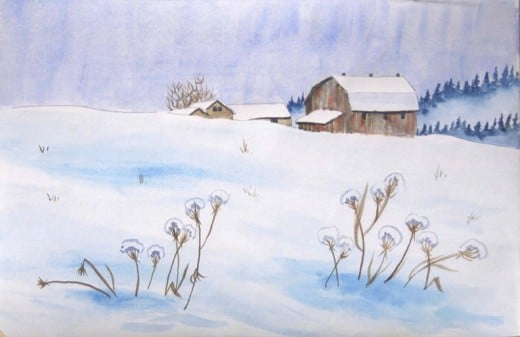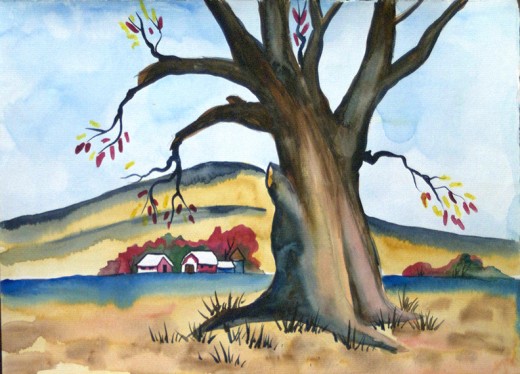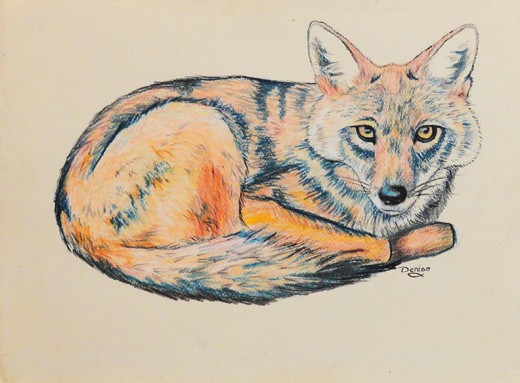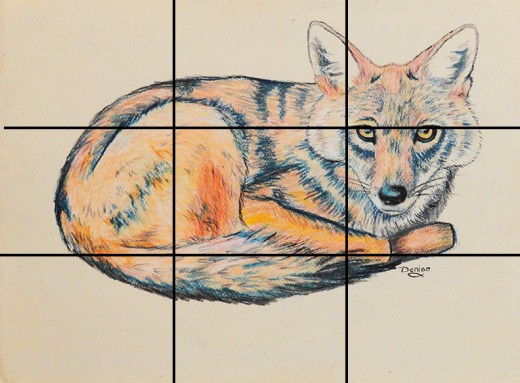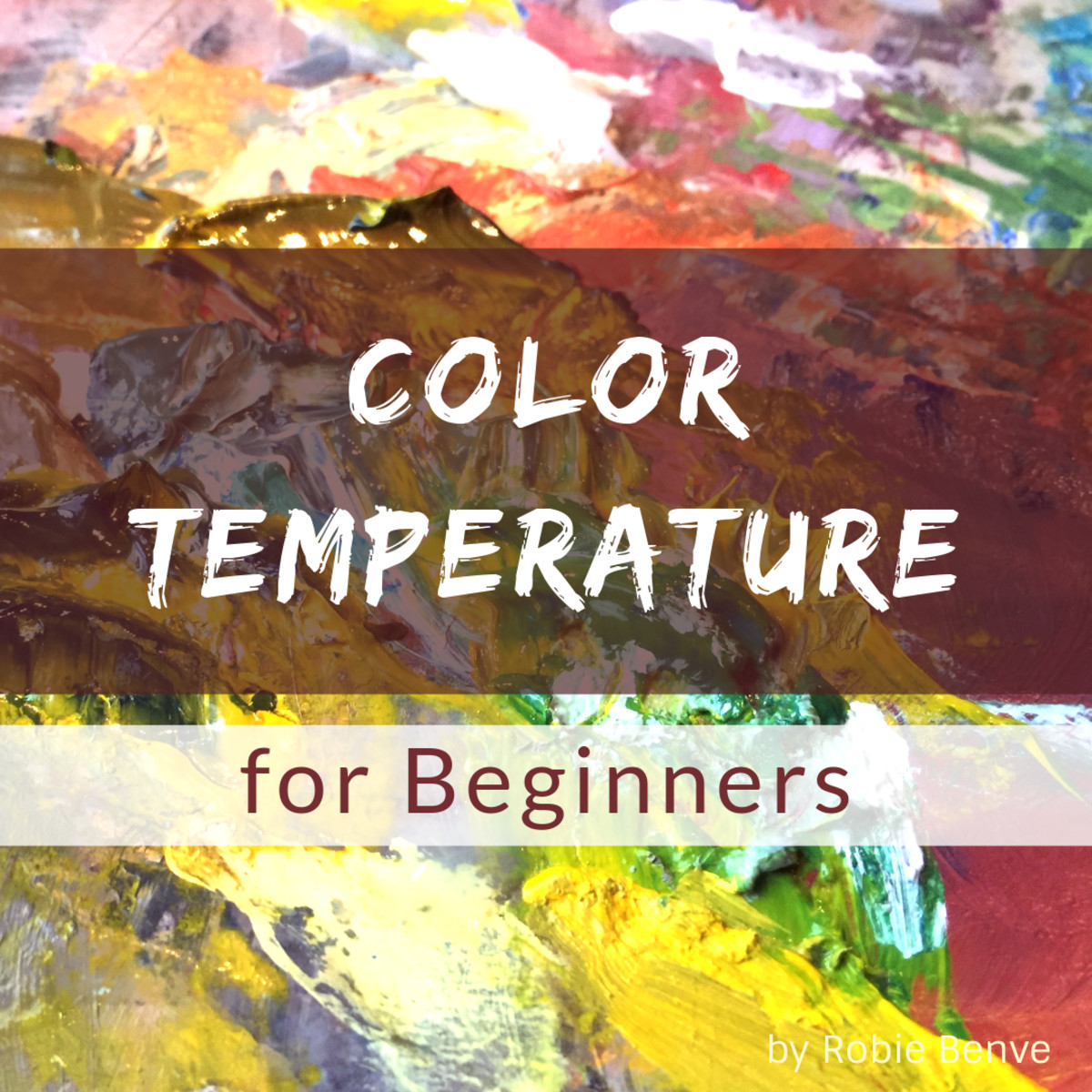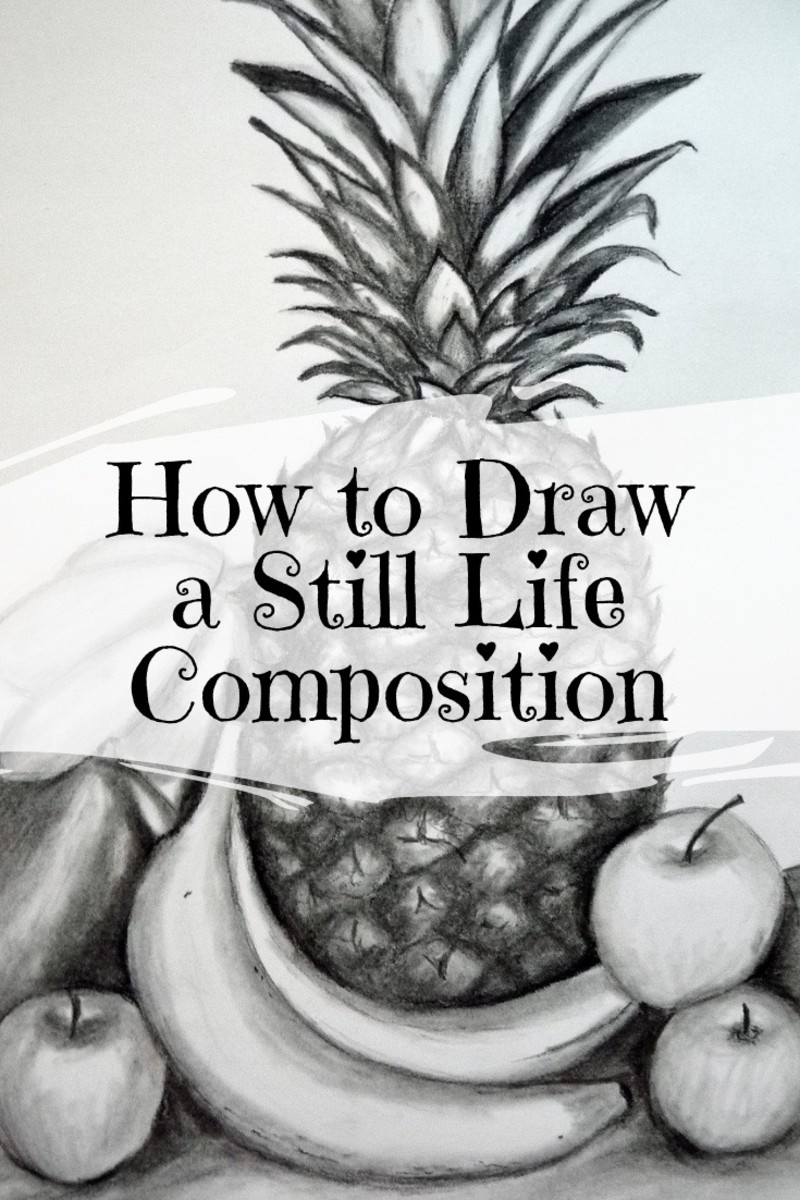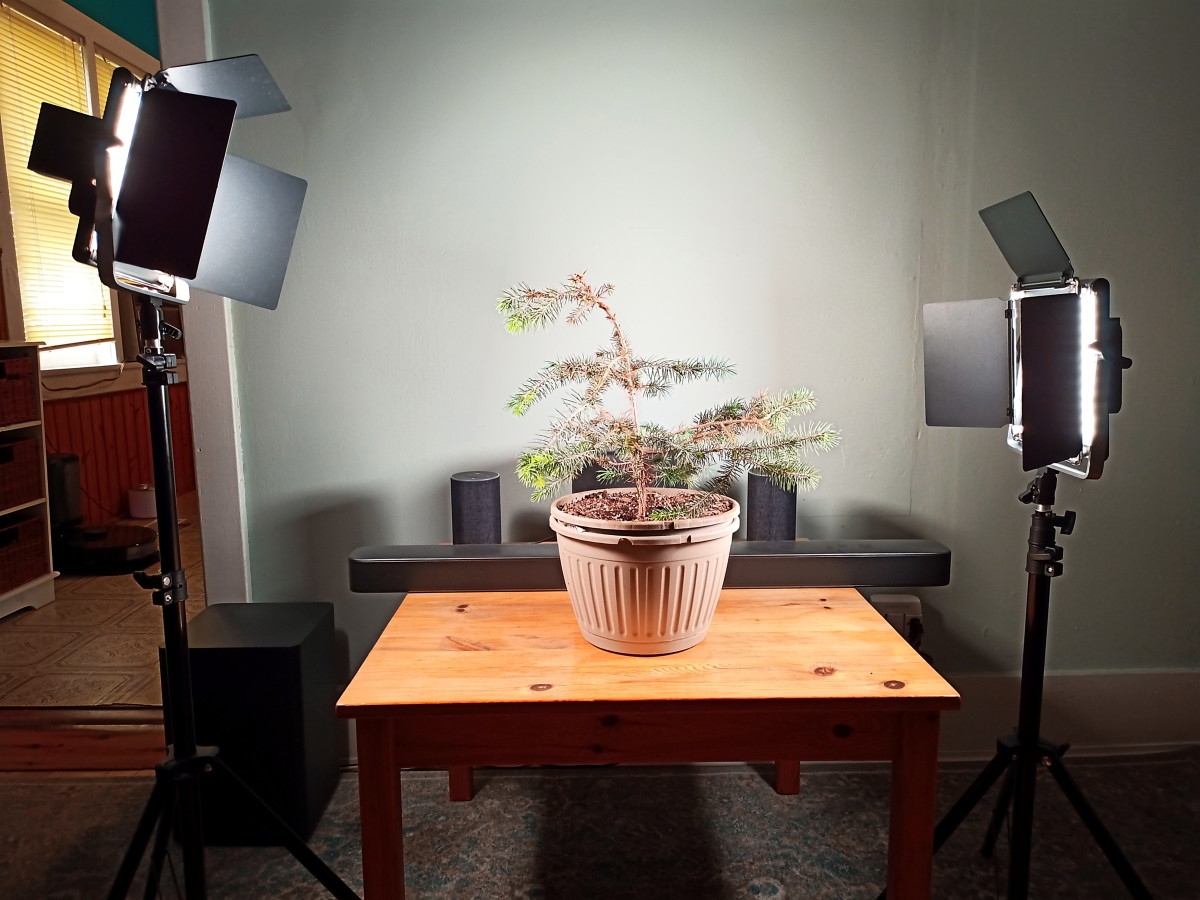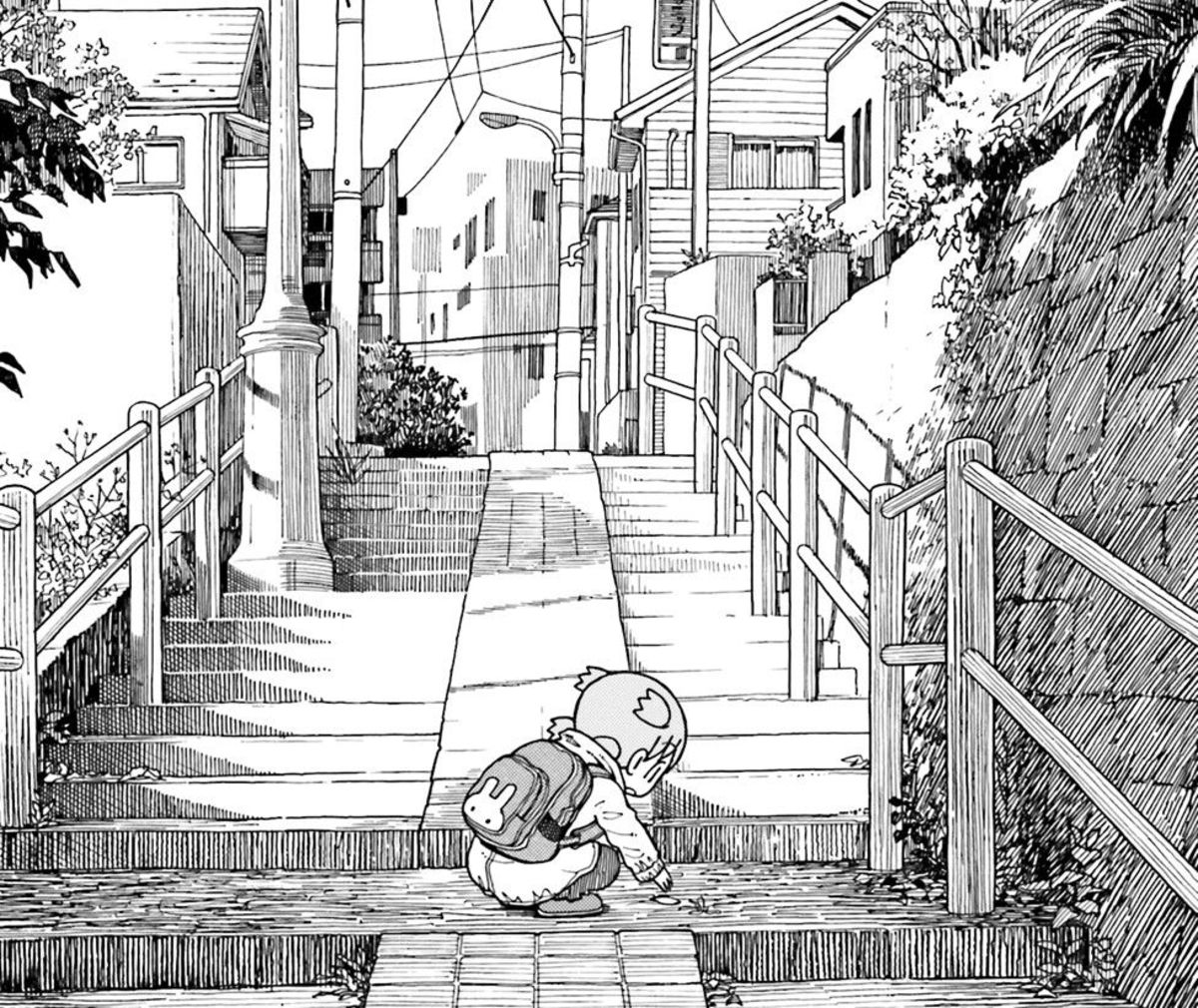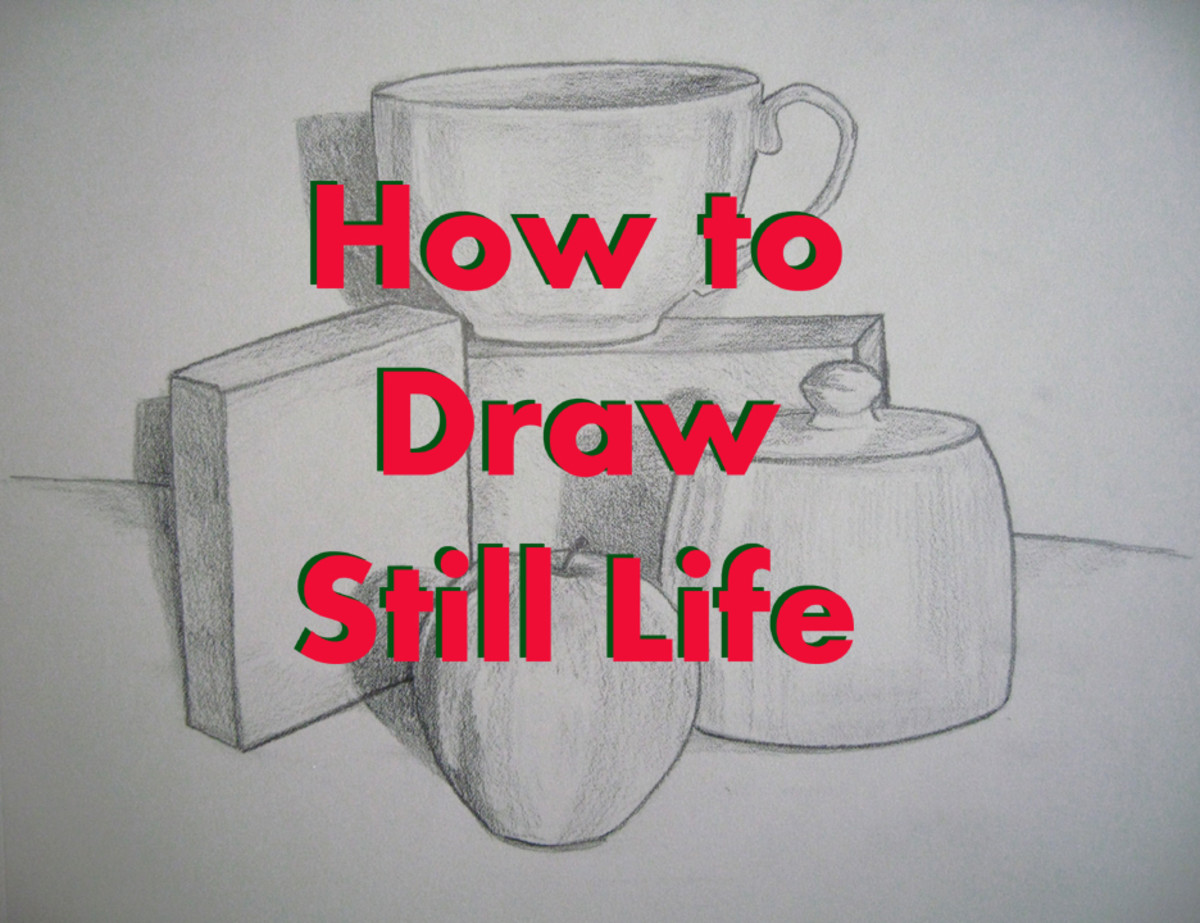- HubPages»
- Arts and Design»
- Drawing»
- Drawing Tutorials
The Mysteries of Composition Examined
Drawing Starts Young
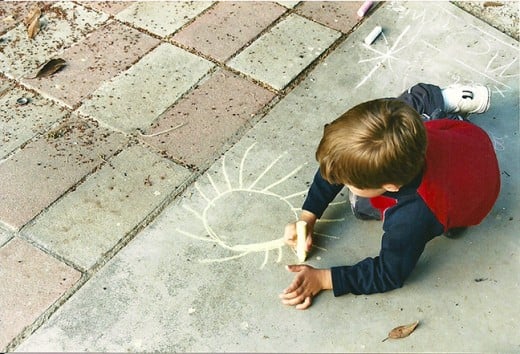
Tea Roses Watercolor Painting
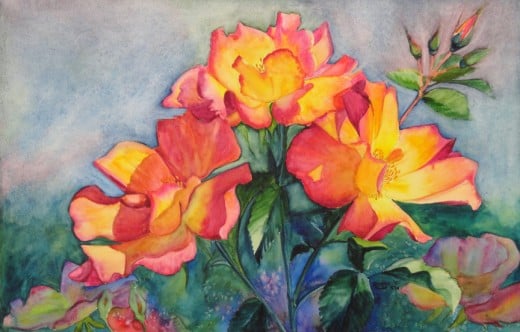
Lighting
We artists are really illusionists. We are creating the illusion of 3-dimensions on a flat 2-dimensional surface. The only tools we have to work with are light and shadows placed in such a way as to look natural. This goes back to my writing on value. A novice tends to forget that there must be light lights and dark darks. It seems like the middle is safer so that is where the novice likes to stay. Dark shadows placed next to sunlit highlights is the way to create the perfect focal point of contrast. It can also create the illusion of shape and dimension.


It’s not what you look at that matters, it’s what you see.
— Henry David ThoreauKit Fox in Colored Pencil
Click thumbnail to view full-size

Rule of Thirds
The next thing to consider is where your center of interest is placed. Never place the focal point in the dead center of the paper. It will look boring. Keep it at a third. Also, the horizon line should never be placed in the middle of the page. Keep it at a third above or below the middle of your paper. A simple way of checking is to draw tic-tac-toe onto your paper. The center of interest should fall where one of the four lines cross.
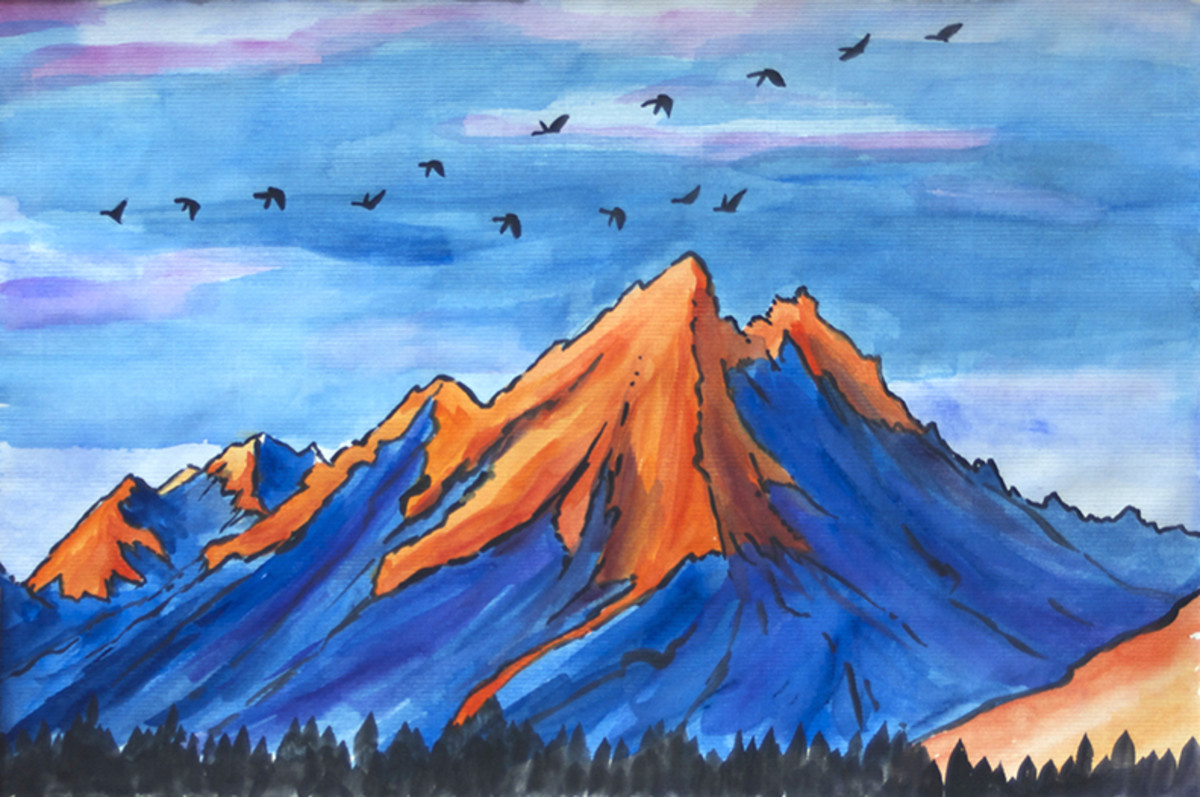
Color Temperature
Colors can be warm or cool. When painting you need to set the overall mood of the picture by picking the temperature. You can change your reference photo to stay with the mood you like by changing the colors of things like flowers, trees, houses, people’s clothing, etc. In most pictures, there are both warms and cools. In a flower arrangement, for instance, the flowers can be warm (pinks and reds) while the shadows and leaves are cool (blues and greens). What you need to do is make sure they are not equal. There should be more warms than cools for a warm picture or more cools than warm for a cool picture. An equal amount of warm and cool is boring to your audience.
Also if the subject and the highlightsare warm then the shadows are cool and vice versa. So if the flowers say, are a warm red or pink, the shadows would appear rather cool blues or blue-green. If the flowers were blue or purple, the shadows may appear warm, somewhat red-brown or even greenish-brown.
Chickens
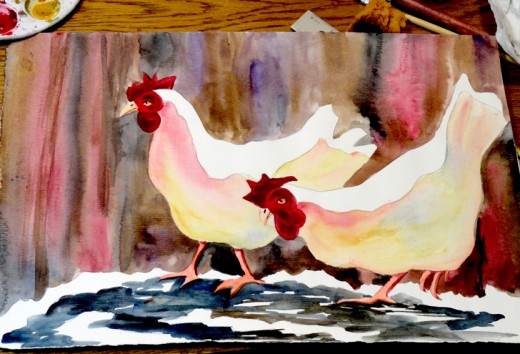
Famous compositions
Do you have a favorite composition by a famous artist?
“Any color is more distinctly seen when opposed to its contrary; thus, black on white, blue near yellow, green near red, and so on.”
— Leonardo da VinciLakeside
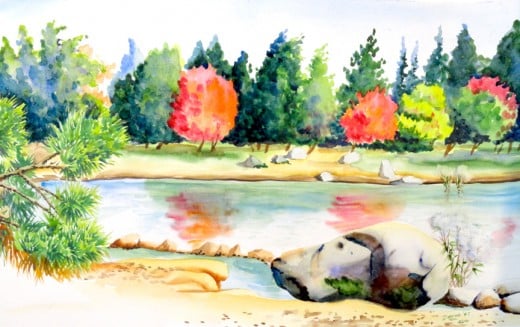
Things to Avoid
- An uninterrupted horizontal or vertical line
- Balloon trees
- Drawing things right to the bottom of the paper
- Putting heaviest things at the top of the paper
- Putting your subject exactly in the center
- Rainbows
- Smiley faces
- Stick figures
- Suns in corners (Remember if you are looking into the sun, usually you can’t see anything else.)
- Copying other’s work
Collage of My Granddaughter
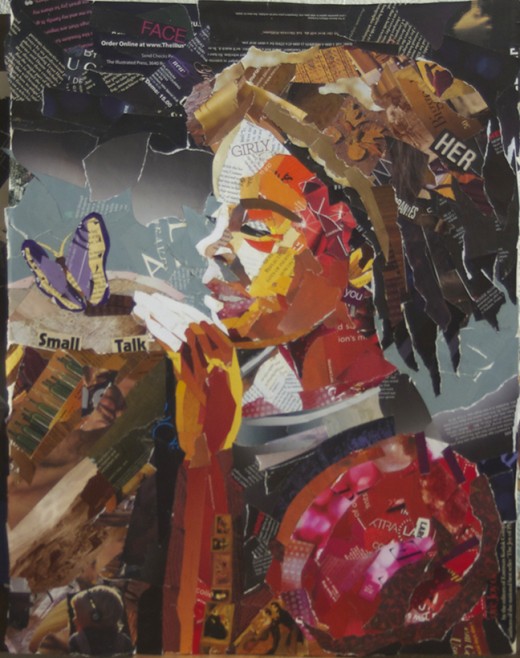
Simplicity
When working with photos, you can find some interestingsubjects with too much going on in the background. If you attempted to paint everything in the photo it would be too busy and take away from your subject. Learn to eliminate busy backgrounds and help the audience focus on an interesting subject. Flowers, for instance, can have too many leaves or too much behind them. Make an interesting blurred wash to indicate something is back there but not anything we want to focus on.
“I can always paint very well with my eyes, but with my hands it doesn’t always work out.”
— Kathe Kollwitz
Rule of Odd Numbers
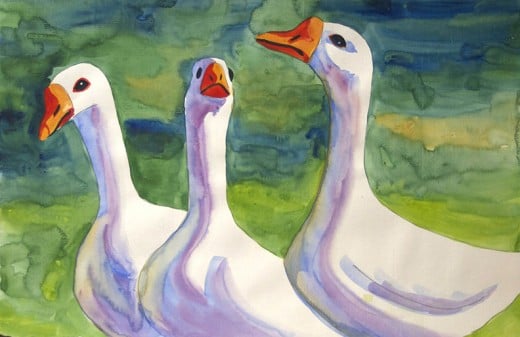
Odd Numbers
In most paintings, the rule of odd numbers is best to follow. Flowers should be in 1, 3, 5, 7, etc. Even-numbered objects look spaced and boring. Florists know this and make arrangements in odd numbers. There is something pleasing about 3’s. Three birds flying in the sky. Decorators know this and will put odd-numbered paintings on a wall or an odd number of pillows on a sofa. There are very rare instances when you can make an even number work for you but if in doubt… make it odd.
Compliments
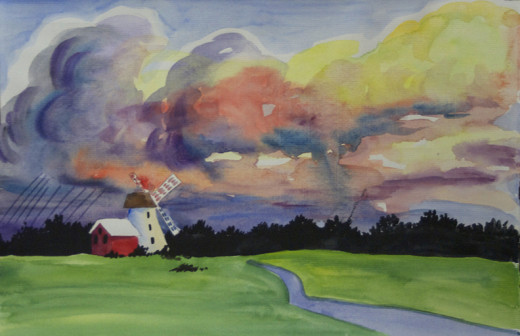
Compliments
Tying in two complementary colors in your painting will make it sing. Try using lots of blue in the background with orange flowers. Red roses love to sit next to greens and the leaves make nice places for greens. Yellow loves to be next to violet. Plan your picture to have complements together even if it is a small spot.
Imagine you have painted a deep forest with lots of greens and blues in the sky. But it is boring and needs something. What? Try adding a few red or orange flowers at the base of the trees, or add a few gold and orange leaves in the trees. Just a few will make the whole painting sing.
Composition
“So I said to myself—I’ll paint what I see—what the flower is to me but I’ll paint it big and they will be surprised into taking time to look at it—I will make even busy New Yorkers take time to see what I see of flowers.”
— Georgia O’Keeffe
Resources
I created a series of coloring books drawing the lines of famous paintings so that children and interested adults could then color what the masters of old did, and in their own way. It helps to see the reasons other artists did what they did, why other artists chose certain colors, etc. The series is available on Lulu and is called:
Classical Renaissance Art Coloring Book
Classical Romantic Era Art Coloring Book
Classical Impressionist Era Art Coloring Book
Classical Modern Art Coloring Book
Becky Reading
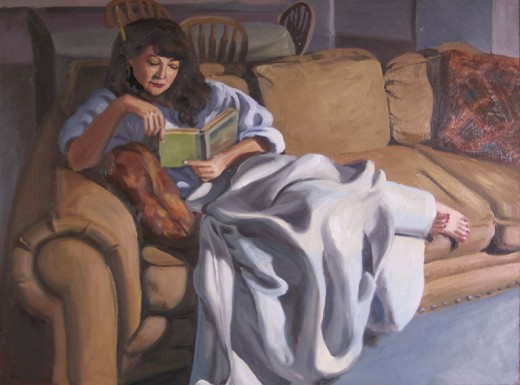
Contrast
Contrast can mean a number of things: light vs. dark, warm vs. cool, big vs. little, elderly vs. young, new vs. old, shinny vs. dull, heavy vs. light, etc. The list goes on and on. The main key is to put some contrast in every picture. Your painting should never be all middle-value tones. Without light lights and dark darks, the picture will be boring and dull. Placing a velvety rose next to a rough coarse wood table is an example. They create contrast and interest together. I think the contrast is why opposites attract; why a night person tends to marry a morning person. If they were both night people, life would be boring and predictable.


